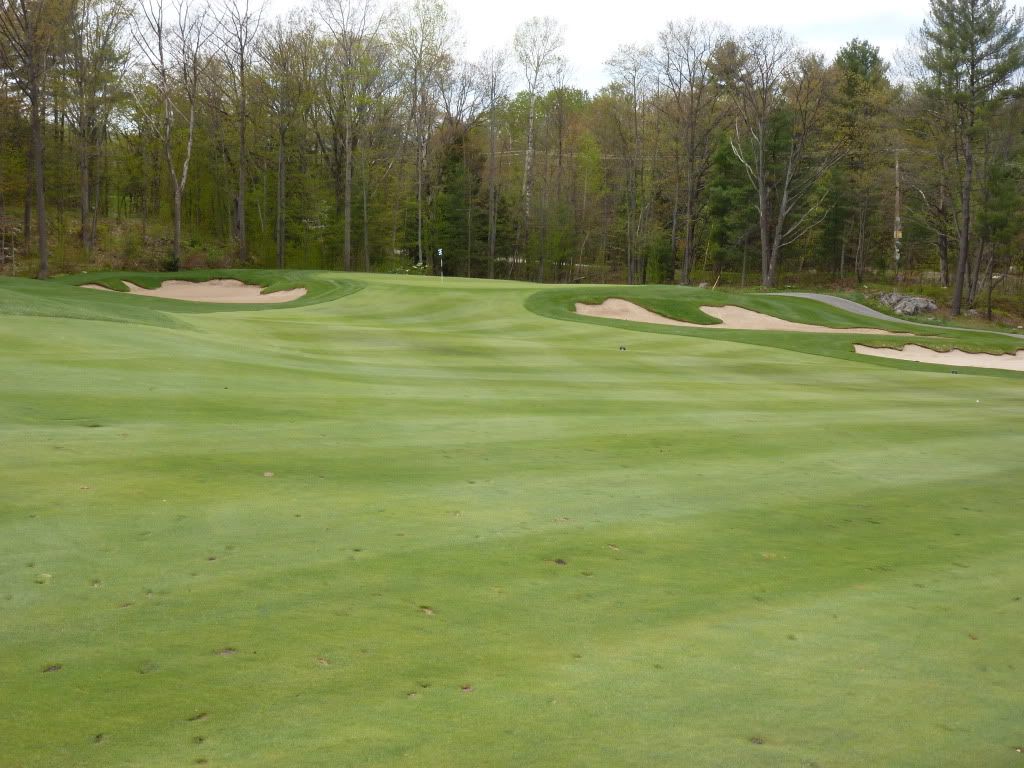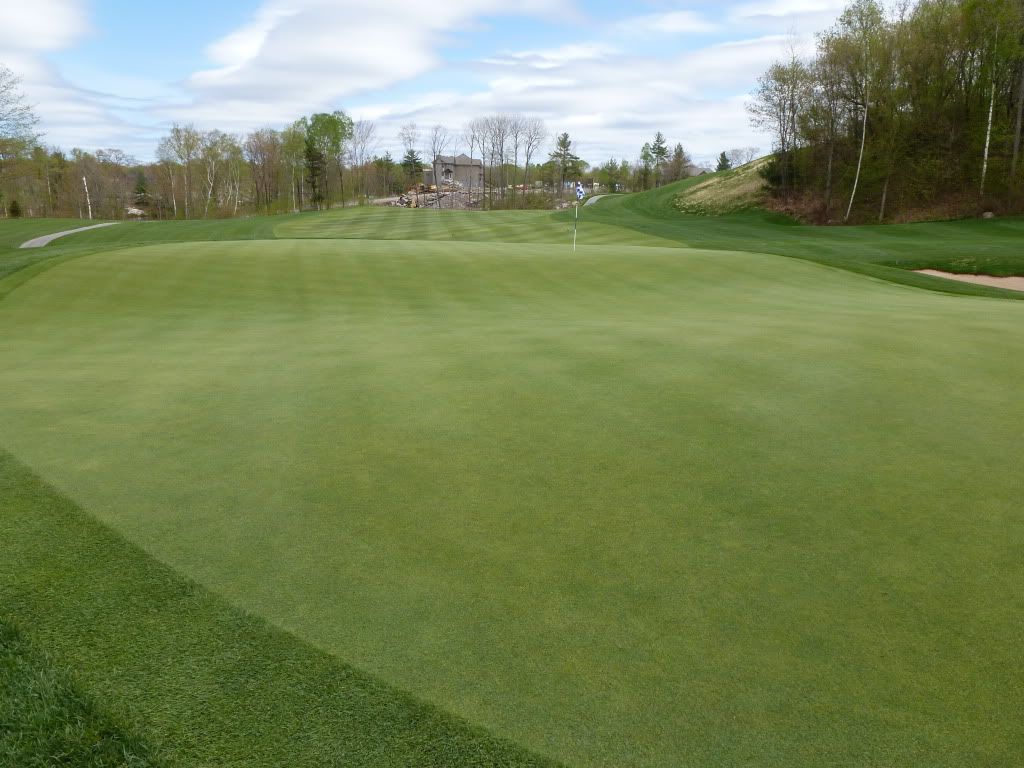Hole 12: Par 5, 539 Yards.
Despite its yardage, this one is reachable in two. This is one of the most undulating fairways you will ever see. It gave me the feel of golfing on a roller coaster.
The rocks in the center of the fairway are a bit of a visual deception. A tee shot anywhere right of the rocks will use the fairway undulations to kick forward and toward the center of the fairway. However, a tee shot over the fairway to the left of the rock will find trouble, even though this appears to be the preferred/aggressive line on this hole that gently moves left.
For most, this will be a three shot hole and the lay-up and third are fairly straightforward.
The bunker short-right of the green has a kind of floating feeling. I'm not sure it really comes into play or impacts strategy. It feels like, as Yannick put it, "eye-candy."

Anything left of the rick will find more rock, thick rough and severe slopes right to left (making the lay-up, with water left, more difficult).
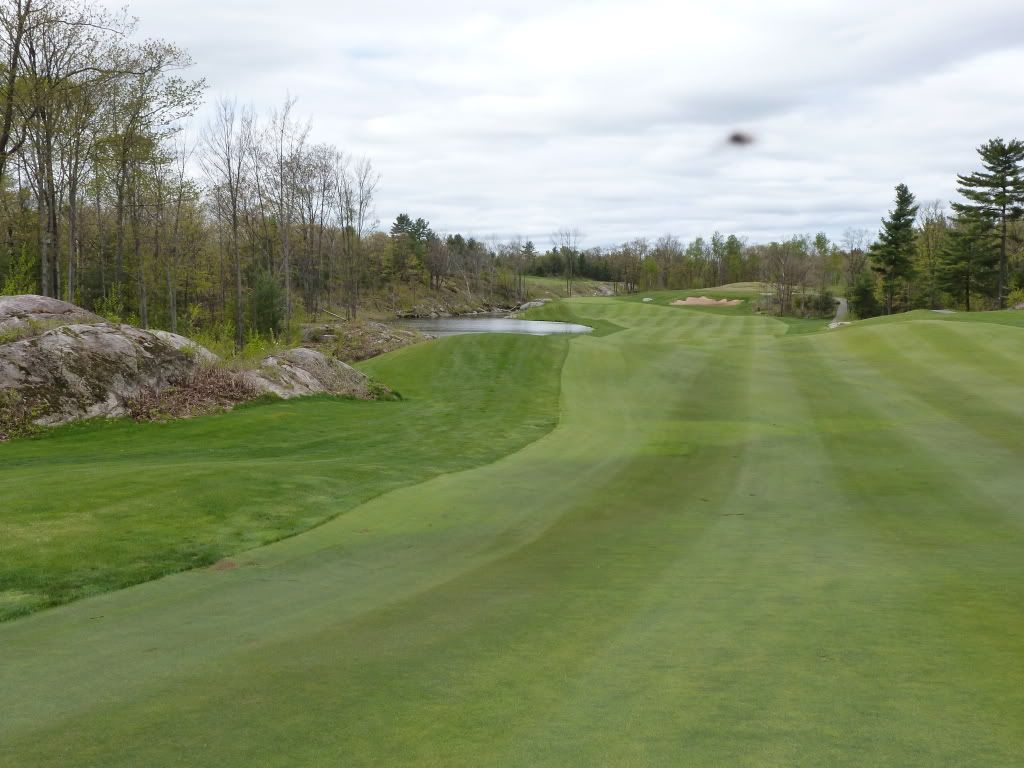

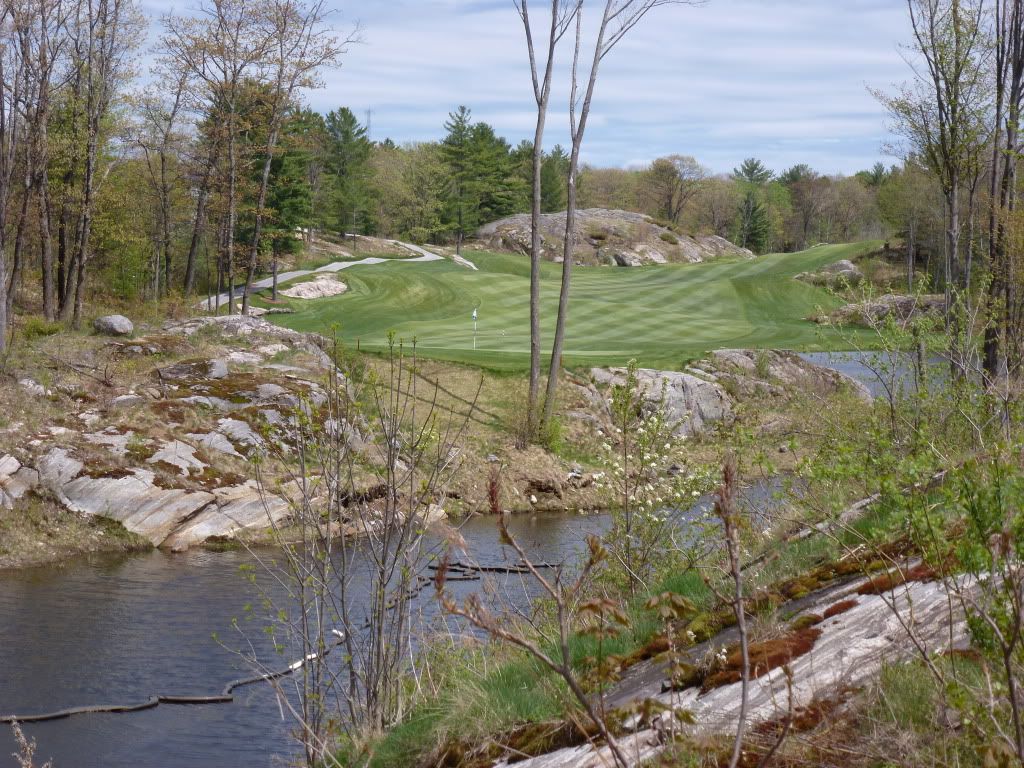
Hole 13: Par 4, 370 Yards.
Dog-leg left where the corner is only carry-able for the longest hitters. The large slope to the left will certainly block out any tee shot that is either not hit well, or not hit far enough to the right. What I don't get, is what is the purpose of those bunkers on the left on the hill? They're not really in play, are they? And who are they there to penalize, someone who hits a sky, pull or a snipe hook? They felt like eye-candy again. Are they there to tempt the player into taking too an aggressive a line? At first glance, it certainly seems like the aggressive play is to take it over the bunkers, but only a very small percentage of golfers could get anywhere near carrying the whole hill on that line.
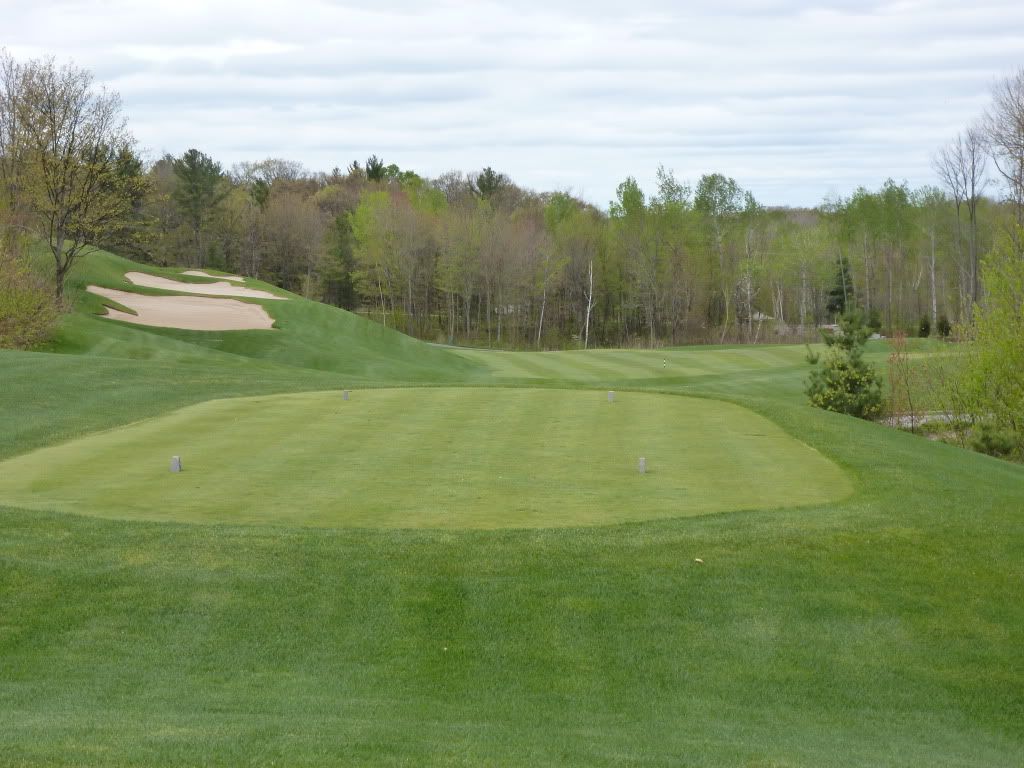
Approach from left of 150
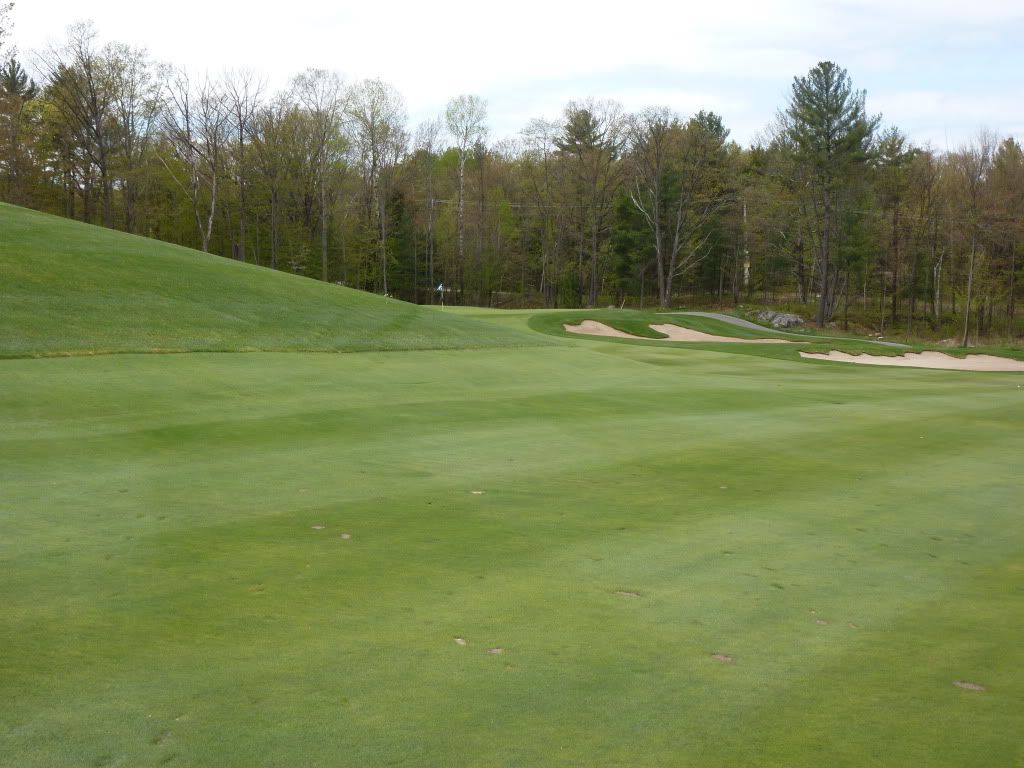
Approach from right of 150
